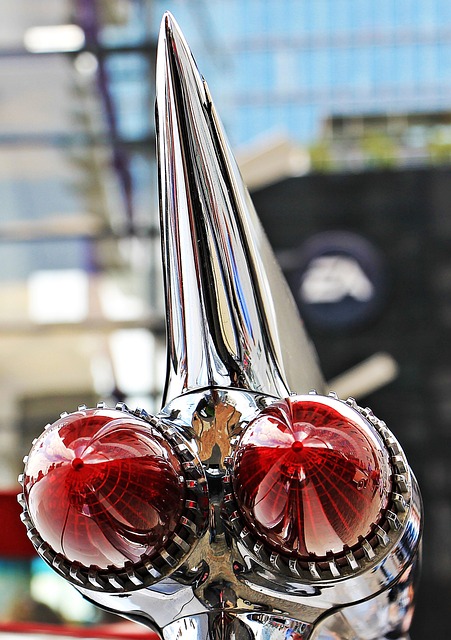Looking to register your car in California? This comprehensive guide breaks down the process step-by-step. From understanding key requirements and gathering essential documents to navigating VIN verification, online or in-person registration, and paying fees, you’ll find everything you need to know. Ensure a smooth experience by following these clear instructions tailored for California residents. Remember, proper VIN verification is crucial before initiating the registration process.
- Understand California Vehicle Registration Requirements
- Gather Necessary Documents for Car Registration
- Perform VIN Verification: Steps and Importance
- Choose a Suitable Registration Method: Online or In-Person
- Pay Registration Fees and Receive Your License Plate
Understand California Vehicle Registration Requirements

Before registering your car in California, it’s crucial to understand the state’s specific requirements. Unlike some other states, California mandates that vehicles undergo a Vehicle Identification Number (VIN) verification process as part of the registration procedure. This ensures that all vehicles on California roads are legitimate and helps deter theft. The VIN is a unique identifier for each vehicle, serving as a digital fingerprint that can be cross-checked against state records.
For residents considering a mobile vin verifier or opting for a vin inspection, it’s important to know that these services can simplify the process. A mobile vin inspection allows you to get this verification done quickly and conveniently at your location. This is particularly useful when dealing with classic cars or vehicles with unique historical backgrounds, ensuring accuracy in documentation.
Gather Necessary Documents for Car Registration

Before you begin the registration process, ensure you have all the essential documents required by the California Department of Motor Vehicles (DMV). One crucial piece is the Vehicle Identification Number (VIN) verification. This step involves a VIN inspection to confirm key vehicle details and its history, which can be done with the help of a mobile vin verifier or through an online service.
Gathering these documents and ensuring accurate information will streamline the registration process. Remember to bring your current vehicle registration (if applicable), proof of insurance, title or lien holder information, and valid identification like a driver’s license. Additionally, have any relevant repair records or maintenance documents handy for a smoother transaction with the DMV.
Perform VIN Verification: Steps and Importance

Before registering your car in California, it’s crucial to perform a Vehicle Identification Number (VIN) verification. This process involves checking the vehicle’s unique VIN to ensure its authenticity and history, which is essential for compliance with state regulations. Start by obtaining your car’s VIN from the vehicle’s registration or warranty information. Then, follow these steps:
1. Utilize a reliable mobile vin verification service or an app that offers accurate data checks.
2. Input your VIN into the chosen tool or platform.
3. Review the detailed report generated, which includes vital information such as accident history, outstanding loans, and recall notices (if any).
A mobile vin inspection ensures you have a clear understanding of your vehicle’s background, helping you make an informed decision during registration. This step is particularly important in California, where state laws require vehicles to be registered accurately and honestly.
Choose a Suitable Registration Method: Online or In-Person

When registering your car in California, one of the initial steps is to decide between an online or in-person registration method. Both options have their advantages and are equally valid under California law. The choice ultimately depends on your personal preference and convenience. Online registration offers the benefit of speed and flexibility—you can complete the process from the comfort of your home or office, saving time and often avoiding traffic. Additionally, many online platforms provide real-time updates on document requirements, making it a streamlined experience.
On the other hand, visiting a California Department of Motor Vehicles (DMV) office for registration ensures a more direct approach, which can be appealing to those who prefer face-to-face interactions. An in-person visit may also be necessary if you’re transferring titles or have complex vehicle history, as a DMV agent can perform a VIN verification and ensure all documents are accurate. Consider using a mobile VIN verifier for this purpose; these services offer on-site or mobile inspections, making the process even more efficient.
Pay Registration Fees and Receive Your License Plate

After completing your vehicle’s registration application, it’s time to pay the required fees. These include the registration fee and a vehicle identification number (VIN) verification fee. The California Department of Motor Vehicles (DMV) will process your application and issue a registration certificate once the fees are paid. Along with this, you’ll receive your unique license plate, which should be securely attached to your vehicle.
Remember, a valid and accurate VIN is crucial for a smooth registration process. You can facilitate this with a mobile VIN inspection or a professional verifier to ensure all details match before submitting your application, thus avoiding potential delays or issues later on.
Registering a car in California involves understanding key requirements, gathering essential documents, and completing crucial steps like VIN verification. By following these guidelines and choosing between online or in-person registration, you can efficiently navigate the process. Remember that proper vehicle registration not only complies with state laws but also ensures your safety on California’s roads.
